Can lavender be grown in a pot and how to do it?
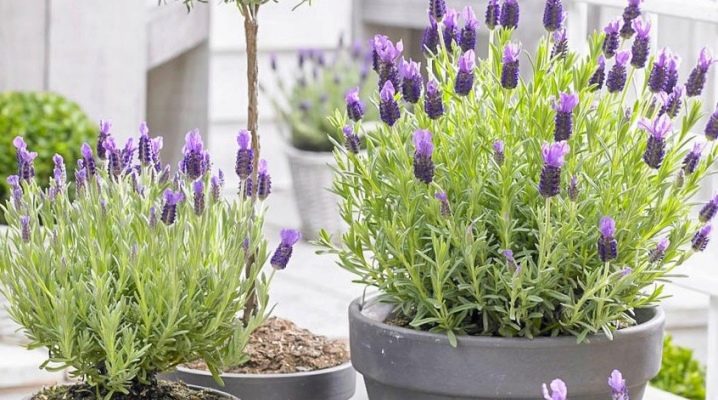
Lavender is a beautiful ornamental plant with a pleasant aroma. This flower can be grown not only in the open field, but also in pots. Indoor green plants look great in homes and apartments.

Growing features
Experienced flower growers know that lavender is a rather whimsical plant. Therefore, for normal growth and development, it is important for him to create the right conditions. You need to pay attention to the following points.
- Pot size. It is recommended to grow lavender in containers with a volume of at least two liters. Ceramic pots work best. For single bushes, high cylindrical containers are chosen, and for group plantings - long containers. It is very important that there are drainage holes at the bottom of each pot to drain the water away.
- Soil quality. The soil for planting lavender should be loose and light. You can buy the right mix at a gardening store. At home, preparing quality soil is also easy enough. To do this, the garden soil is mixed with humus and sand in a ratio of 3: 2: 1. The prepared soil mixture is sieved and spilled with a solution of potassium permanganate - this helps to disinfect it and make it looser.
- Illumination of the room. Potted lavender should always be kept in a well-lit room. Otherwise, the plant will not bloom. On cloudy days, lavender needs to provide additional lighting. In winter, flowers are also recommended to be highlighted. For this it is worth using a fluorescent lamp. Daylight hours for lavender should be 8-10 hours.
In such conditions, the flower will retain its attractiveness for a long time. In addition, he will be less likely to get sick.
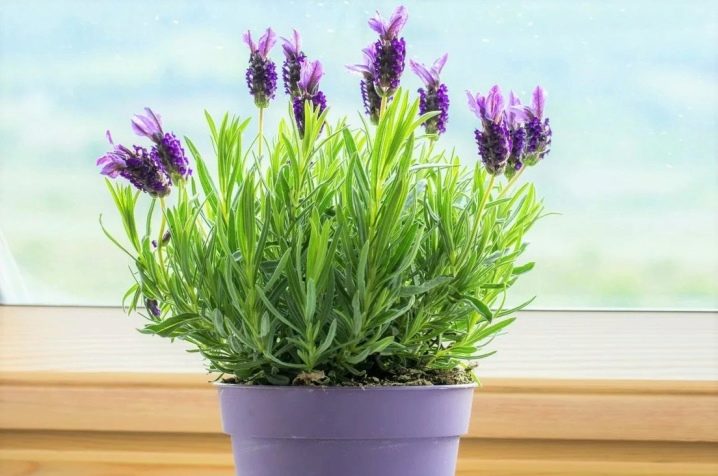
Suitable varieties
Not all types of lavender can be grown at home. The following types of flowers are suitable for planting in pots.
- English. This lavender is also often called spikelet or narrow-leaved. The plant grows up to a meter in height. It blooms in the first half of summer. A beautiful green bush will look good in a planter or wide pot.
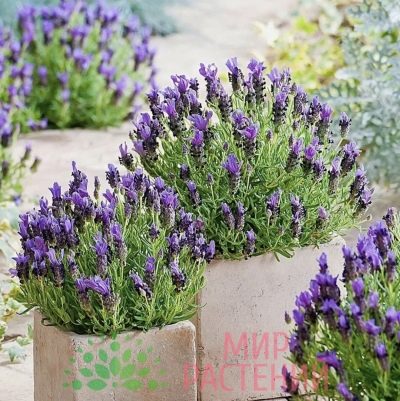
- Broadleaf. A distinctive feature of this type of lavender is its rich aroma. Outwardly, the flower can be recognized by the presence of three inflorescences on the stem at once.
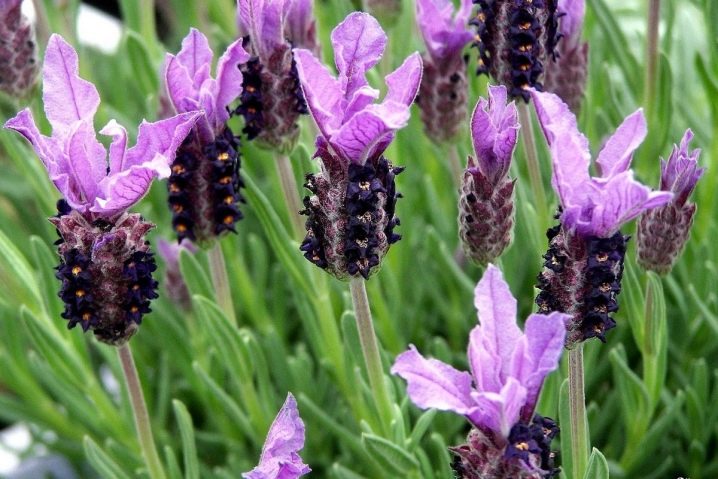
- Dutch. The hybrid plant is also often called lavandin. It has a low cold tolerance, so it is usually grown on a balcony or terrace, not in a garden. The inflorescences of such lavender are large and beautiful. They appear on the bush in the second half of July.
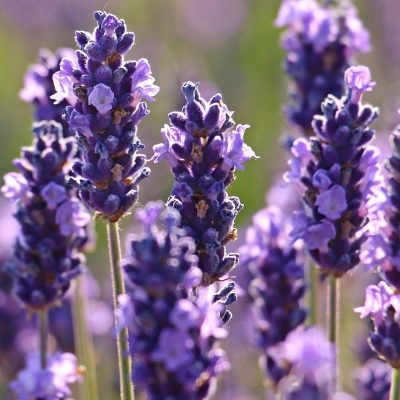
- Cranked. Decorative lavender has a strong scent. Her flowers are large, bright purple. In nature, cutting lavender is common in Spain and Turkey. In Russia, fresh flowers are grown in pots.
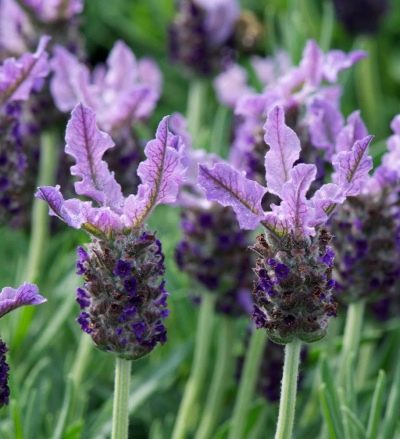
- Stekhadskaya. Most of these lavender bushes are compact. It blooms early enough. You can admire its beautiful inflorescences from March to June. At the end of summer, this type of lavender may well bloom a second time.

- Toothed. This lavender is a neat, small shrub. Its foliage is silvery, and the flowers are large enough. This type of lavender loves warmth, so it is best suited for growing in pots.
All of these types of lavender can be found easily at flower shops.

Landing
Before planting lavender, the seeds must be stratified to increase the germination of flowers.As a rule, the seeds are wrapped in a damp cloth and left in a warm place for 3 days. When the seeds are swollen, they are sent to the refrigerator.
The process of planting germinated seeds consists of the following steps.
- The container must be filled with soil. It should be gently loosened and moistened using a spray bottle.
- After that, seeds are planted in the prepared soil. The distance between them should be within two centimeters.
- After planting, the container must be covered with a transparent film. In this form, the flowers are left on the windowsill.
Seedlings begin to appear in containers as early as two weeks after sowing. At this stage, the film should be removed. When the plants have 3-4 full leaves, they can be dived. This must be done very carefully, trying not to injure the weak roots.

Care
It is important for mature plants to be properly cared for. Pay special attention to the following points.
Conditions
In order for lavender to grow well in an apartment and bloom regularly, it must be grown in a room with high air humidity. If necessary, a small container of water should be placed next to the pot.
The temperature in the room where the lavender grows also plays an important role. It should be within 20 degrees. The room in which the plant is located must be regularly ventilated.
In winter, the flower should be placed away from heating appliances, otherwise the green foliage will begin to turn yellow and dry.

Watering
It is important to water properly the lavender growing at home. Seedlings should be watered on a daily basis. This is best done with a spray bottle. Adult plants are watered much less frequently. Do this as the earth dries up.
Water for watering flowers should be used warm and settled. It is not recommended to water lavender with tap water. This can damage the flowers.
After watering, it is recommended to loosen the soil in the pot. Thanks to this, a dense crust will not form in the container, which means that nutrients and moisture will flow to the roots of the plant faster.
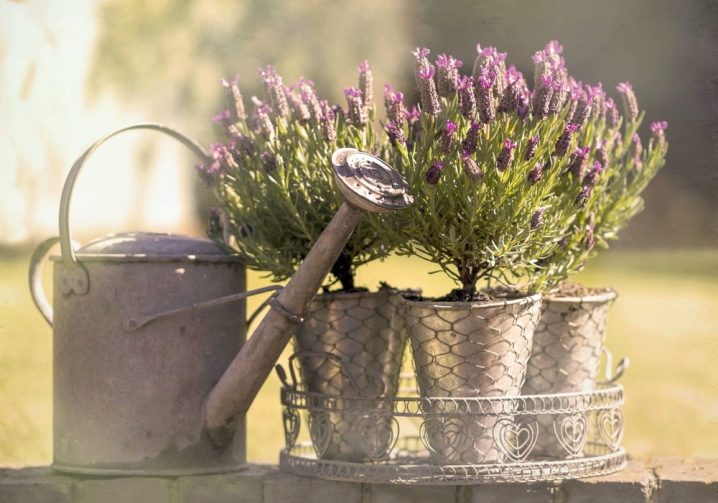
Top dressing
To maintain the attractiveness of lavender for a long time, flowers must be fertilized regularly. In the warm season, this is done every 15-20 days. With the onset of autumn, they stop fertilizing the soil.
Complex flower fertilizers can be used to feed the plant. In spring, lavender should be fed with foods high in nitrogen. During the budding period, the bushes especially need elements such as phosphorus and potassium.
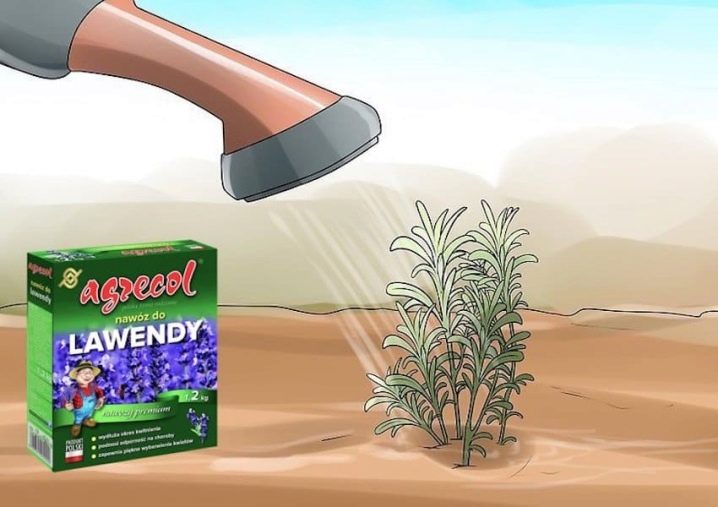
Pruning
Adult bushes are recommended to be pruned regularly. This procedure stimulates the growth of new shoots and the flowering of the plant. It is necessary to trim indoor lavender with sharp disinfected tools.
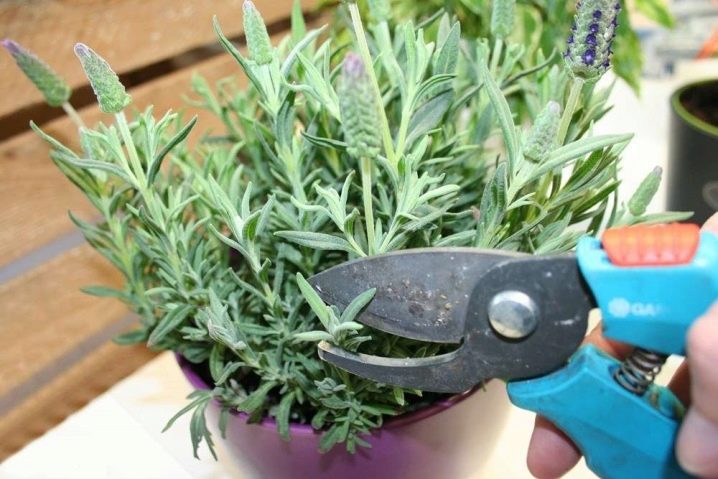
Transfer
Lavender has a long central root. As the flower grows, its length increases. It is very important not to let him rest against the bottom of the pot. This will cause the flower to stop developing. To prevent this from happening, lavender needs to be regularly transplanted into deeper pots. This is usually done once a year.
The bush transplant process consists of the following steps.
- Lavender must be carefully removed from the pot. It comes out of the container very easily. It is enough to first water the flower and turn the pot over. It is not worth cleaning the roots of the plant from the ground.
- The new container must be carefully filled with loose soil. There is no need to seal it.
- Pulling a hole of a suitable size in a pot, a dug out flower should be placed in it.
- From above, the roots of the plant are carefully covered with the remnants of loose soil.
The transplanted plant is watered with warm water. In order for it to take root better, a growth stimulant can be added to the container with the liquid. An excellent option is a drug called Zircon. It is diluted in water according to the instructions. The liquid is then used to water the lavender.

Reproduction
Indoor lavender can be propagated in a variety of ways. The most time consuming of them is seed.It is not suitable for everyone, because the process of growing lavender from seeds takes a lot of time. Therefore, flower growers prefer other methods.
- Cuttings. To propagate lavender in this way, shoots 8-10 centimeters long are cut from the mother bush. Prepared cuttings are placed in a container filled with a nutritious moist substrate. Immediately after this, the container is covered with plastic wrap. In such greenhouse conditions, plants develop much faster. Cuttings take root pretty soon.
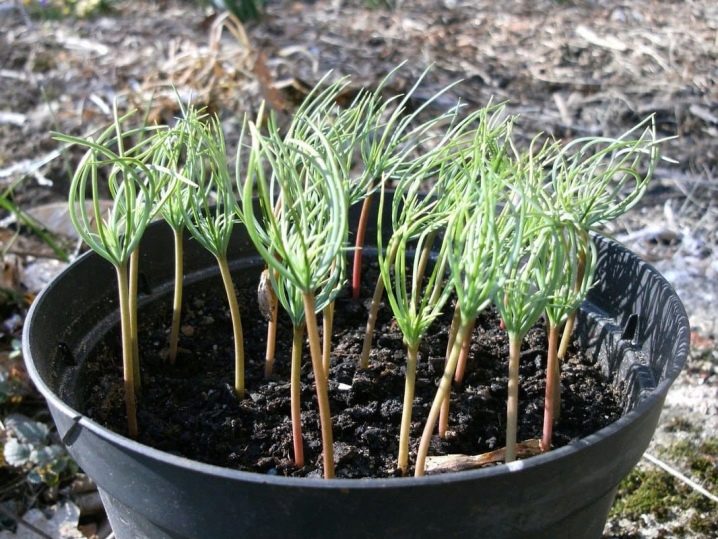
- Division of the bush. Plants can be propagated in this way at the age of 2-3 years. They divide both indoor flowers and lavender, which grows on the street. Delenki are immediately planted in a container with loose and nutritious soil, and then watered. This lavender grows very quickly.

- Layers. This method is suitable for propagating lavender in the garden. First, you need to make small grooves around the bush. Healthy lavender branches are gently bent to the ground and placed in these grooves. Then they are carefully fixed and sprinkled with a layer of loose soil. In this state, lavender takes root quickly. As soon as the plant takes root, the layers should be carefully cut off from the mother flower with a sharp knife. After that, young lavender can be planted in a pot prepared in advance.
Using any of these methods, a young flower with the characteristics of the mother plant can be grown.
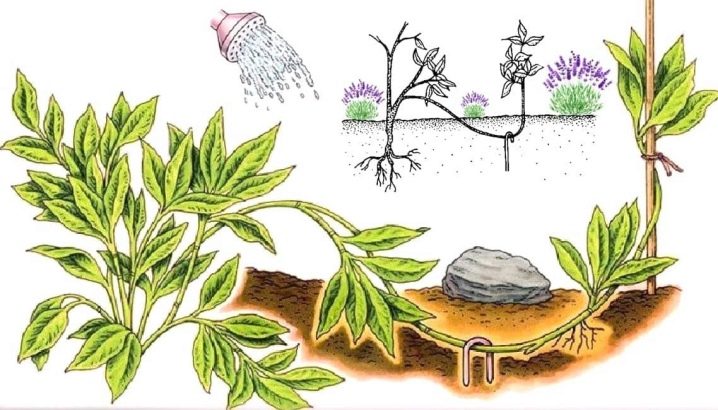
Diseases and pests
Home grown lavender is a delicate flower. He is exposed to many diseases. The following diseases are especially dangerous for him.
- Gray rot. The shoots of a diseased plant are quickly covered with a cannon bloom. Over time, it grows and turns into a full-fledged mold. At this time, the plant weakens greatly, so the likelihood of its death increases significantly. Having noticed the signs of this disease, the flower should be sprayed with copper sulfate. If the moment was missed, it remains only to get rid of the plant and carefully treat the pot with a disinfectant.
- Powdery mildew. The main sign of the development of this disease is dense white droplets on foliage and shoots. They turn brown over time. The diseased plant weakens and dies. You can prevent this by spraying the bush with "Fitosporin". In addition to this, the ailing plant is moved to the sun and watering is stopped for a while. If done correctly, the plant will quickly recover from illness.

Small pests are also dangerous for the indoor flower.
- Spider mite. This pest can easily be brought into your home by wearing clothes or shoes. In addition, he can enter the room through an open window. A thin white cobweb appears on the foliage of ailing plants. After a while, the lavender dries up. Treatment with Fitoverm or other similar products can help get rid of the tick.
- Aphid. Like many other indoor plants, aphids can attack lavender. To combat these small insects, you can use folk remedies. As a rule, flowers are treated with solanaceous or marigold infusions. If such products do not work, lavender is sprayed with chemicals. They should be used outdoors or in a well-ventilated area. It is important to protect the skin and respiratory tract before processing the plant.
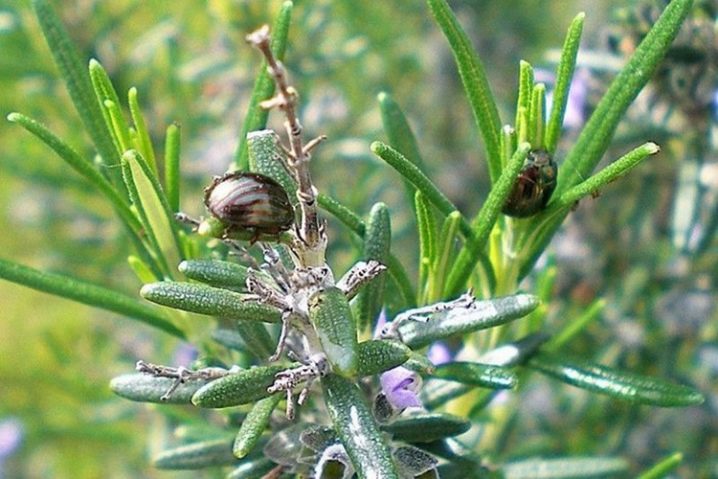
If properly cared for, indoor lavender will bloom for a long time and retain its attractiveness.







































































































The comment was sent successfully.